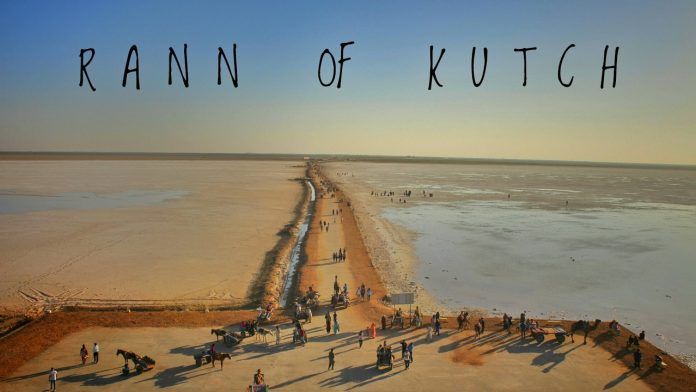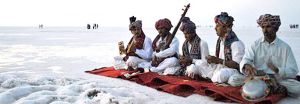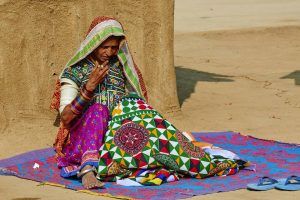Raan Of Kutch
May 29, 2019 • 13 views
India is a country of numerous festivals. Among all these festivals Rann of Kutch is one of the most popular festival in Kutch Gujarat. Each year during the winters kutch Gujarat host Raan Utsav which means ”Desert Festival”. This festival is filled with music, dance, nature beauty of White rann and much more that when you visit under the full moon. Kutch Raan Utsav is the shimmering landscape that gives the enchanting moments of this Fest, which feels like as Heaven on Earth during festival time. In facts it’s a family holiday to explore fun moment and store in cameras for long time. Last year raan utsav was celebrated from 1st November to 20th February.

Kutch Beauty
Kutch, located in the State of Gujarat, is blessed with one of the most ecologically and culturally abundant landforms. The brimming profusion of nature’s beauty, culture and tradition, superfluity of colors and celebration, cornucopia of joy and beauty, all together reflect the magnificence of the kaleidoscopic Kutch. Particularly, the spectacular sight of boundless white desert under the moonlight presents the stunning creation of nature, unique to this world.
The distinctive folk dances and music, intricate arts and crafts, gracious people and nature along with the affluent handicraft culture of the district like folk textiles, exquisite embroidery, Bandhani sarees, traditional ornaments and mirror work are some of the specialties of Kutch, Gujarat, India.
Culture Of Kutch(Art, Music, Culture)
The Kutch district in Gujarat is well known for its traditional and cultural values.Kutch Cultureis famous for its creative art. They speak Kutchi language. Culture of Kutch has different communities such as nomadic, semi nomadic still living. The houses in Kutch are very creative and civilized. Culture in kutch is very artistic.

The Kutch people are almost vegetarian and the main food include bajra and milk. They drink buttermilk while having lunch. Kutch is a creative region in india in the field of textile art. The embroidery work which is done in a very intense manner and it seems to be very attractive. The speciality of this region is embroidery work with different styles such as mirrors. Tatoo is the mainCulture in Kutch.
A) Kutch Folk Music
Kutch district is very fond of Kutchi Folk Music and its plays a vital part of everyone’s lives. The foundation of the folk music is existed since the ancient period. Music is like harmony and the way through a man can show his feeling and sentiments. There are various instruments such as Dholak, Damaru, Murli, Nagara, Sarnai, Flute, Duff etc. Musical Instruments are linked with various aspects of people and their religion.

B) Kutch Folk Dance
Kutch culture also includes kutchi folk dance. In culture of kutch folk dance is the oldest form of dance. These are different forms of folk dance such as Dandiya Raas and kutchi Gajiyo. These are modern forms of dandiya know as disco dandiya.
C) Kutch Handicrafts
Kutch is being considered to be a heaven for numerous handicrafts, which are carried on from generation to generation. The traditional basis of its property has been foreign trade in various handicrafts. The artifact of Kutch moved not only the length and breadth of the country but also in the overseas market. The main handicrafts of embroidery of ethnic style, patchwork, terracotta, pen knives and nut crackers.

D) Embroidery
Kutchi people weave their dreams in different forms of embroidery. Kutch is renowned for its mirrored embroideries. Most of these were traditionally stitched by village women, for themselves and their families, to create festivity, honor duties or to generate wealth. Embroideries contributes to the substantial economic exchange required for marriage and fulfilled other social obligation which required gifts.
E) Wood Carving
It is one of the best handicrafts of Kutch. The Harijan people living in Dumaro and Ludia are master crafts persons of wood carving. They make various utensils like pastel roller, chapati disc, bottles, small tables, glass etc. of the wood doing attractive carving. Generally the use the teak wood and locally available bahuv wood to prepare the fine artifacts.
F) Mud Wall Painting
House in Banni area are living museums of beautiful paintings Rabari and Harijan womens folk traditionally experts in depicting their dreams in painting . They turn houses into homes. The clay collected and mixed with camel dung and kept for a few days. Then it is kneaded to obtain sufficient plasticity and designs are worked on the mud wall using this clay mixture.
